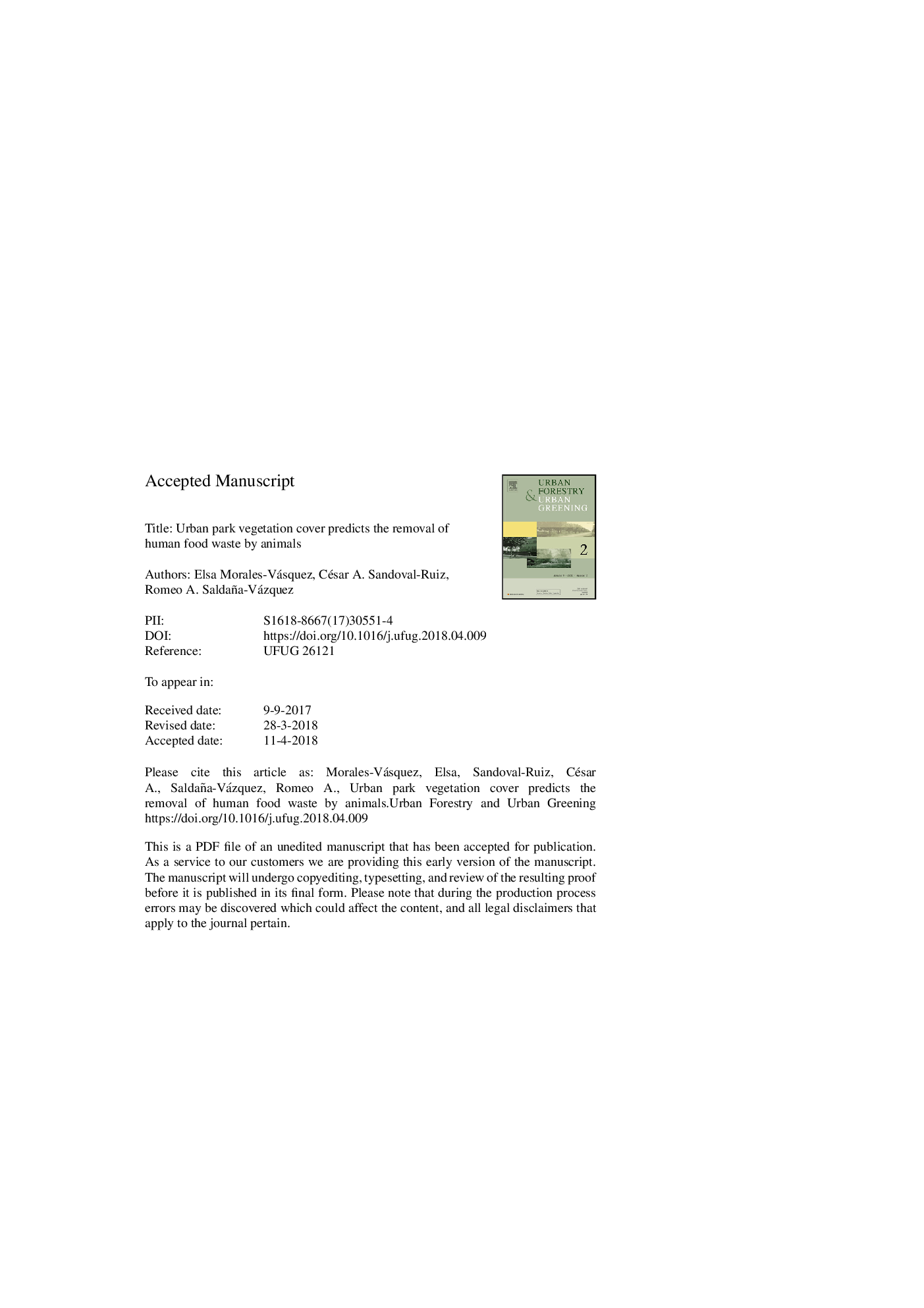| Article ID | Journal | Published Year | Pages | File Type |
|---|---|---|---|---|
| 6549195 | Urban Forestry & Urban Greening | 2018 | 26 Pages |
Abstract
Urban parks are biodiversity reservoirs and provide ecosystem services within cities. They regulate temperature, reduce noise and increase water infiltration. As biodiversity reservoirs, they allow the animals that inhabit them to provide other services, such as pollination, pest control, and the decomposition of organic material. The aim of this study was to evaluate the effect of vegetation cover in urban parks on arthropod biomass, the density of vertebrates and the removal of human food waste by animals. Eleven parks with different amounts of vegetation cover were sampled. The arthropod biomass was obtained through pitfall traps; the density of vertebrates through footprint traps; and the removal of food through two experiments, one that allowed the vertebrates to remove food and one that did not. Animals were offered fried wheat, candy, corn cob and sausage. Whereas the number of vertebrate visits to footprint traps was not explained by the amount of vegetation cover, arthropod biomass was. Food removal, too, was positively related to the amount of vegetation cover, and the most food was removed in experiments that included vertebrates; sausage was the food removed most often in both experiments. These findings suggest that increasing park vegetation cover result in more area available to urban fauna, especially arthropods, allowing them to increase the food removal service.
Related Topics
Life Sciences
Agricultural and Biological Sciences
Forestry
Authors
Elsa Morales-Vásquez, César A. Sandoval-Ruiz, Romeo A. Saldaña-Vázquez,
